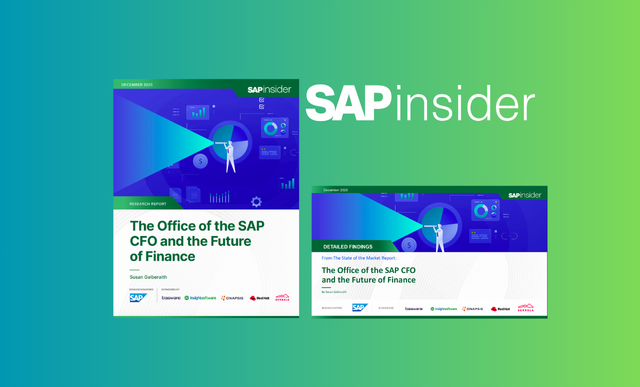What is AIoT?
Internet of things (IoT) devices are now being used in most major supply chains in some forms, at various scales. These devices leverage the internet to collect and exchange data about supply chain activities. Cisco estimates that by 2025, there will be 42 billion IoT devices in use globally. Cisco also estimates that IoT devices are already generating 5 quintillion data daily. And as the number of these devices in use multiplies, so will the associated data volume. That is where AI comes into play, helping organizations leverage the data being captured by these devices in optimal ways. These combined technologies constitute AIoT (“Artificial Intelligence of Things”). The three key components of the AIoT solution are:
- AI algorithm: These programmable systems allow edge devices to learn, reason, and process information.
- 5G Networks (6G in the pipeline): Fifth-generation mobile networks with high-speed, near-zero lag for real-time data processing.
- IoT generated data: Huge volumes of data that is collected and processed by numerous internet-connected sources.
Together, these interconnected devices transform how we collect data in our supply chain operations, creating the AIoT (“Artificial Intelligence of Things”).
Role of AIoT in Supply Chain Planning
In a recent conversation with SAPinsider, David Vallejo, VP of the digital supply chain for SAP, highlighted information delay as a waste that hinders optimal supply chain planning. And he could not have been more right. This is a critical aspect we did not account for in supply chain planning for a while. This information delay is one of the reasons that many supply chain planning solutions could not address supply chain disruptions in the last few years. This is why real-time supply chain visibility and planning have become a critical focus. We covered this aspect in our research
Modernizing Logistics and Inventory Tracking last year. But there is another critical aspect that David highlighted: Mere
visibility is not enough. And he was again hitting the nail right on the head.
What is critical is to understand how effectively you can leverage the real-time visibility data to plan your tactical, operational, and strategic supply chain. And this is where IoT can play a very important role. As defined in the previous section, AIoT executes AI on edge on a vast amount of sensor data. This AI aspect can be either a simple computation, an ML algorithm, or a complex neural network. At a high level, three buckets of AIoT can be leveraged in supply chain planning:
- Edge Analytics: This is where devices with sensors process the data on edge (devices themselves) rather than just collecting and propagating data to data centers in the cloud.
- Computer Vision on edge: An example of this category is smart cameras, which can detect production flow issues in a manufacturing context or product quality issues.
- Conversational AI on edge: Voice AI on edge plays a significant role in shop floor operations and tactical shop floor planning.
Examples of Applications
Operational planning: This is day-to-day supply chain planning and all three buckets of AIoT applications play a significant role here. From getting an update on the real-time status of an inbound product to a warehouse, with its temperature and humidity conditions, to a smart camera flagging product quality issues in a production line, AIoT can transform operational planning. Applications span across all supply chain sub-functions.
Tactical planning: Though this bucket is focused on short-term and mid-term planning, AIoT-generated insights can play a critical role here. AIoT data from operations planning can be leveraged in this bucket to transform planning processes. An example is redefining the manufacturing process to ensure that a high-quality product can be made for the lowest cost possible. AIoT-generated insights will help flag issues and identify bottlenecks when aggregated. Additional ML algorithms can be leveraged on these data points, to run analytics methodologies like simulation and optimization. An advanced application is training a deep learning algorithm when you have collected a vast amount of operational AIoT data points.
Strategic planning: While strategy itself is considered more "art" as compared to operational or tactical planning "science", the fact is, there are opportunities to integrate AIoT data points in strategic supply chain planning. An example is redesigning products to reduce supply chain complexity and minimize carbon footprint. AIoT-generated data pool can help identify opportunities to design a simpler supply chain and a simpler product that aligns with both customer expectations and supply chain simplicity requirements.
This hierarchy is summarized in the illustration below.

What Does This Mean for SAPinsiders?
Certainly, AIoT is a capability that can help you transform your supply chain planning in a way you had not imagined before. Leading business application vendors like SAP, Microsoft, AWS, GCP, etc., already have platform offerings in this space. But the truth is, considering the maturity of the technology, you will realize the full benefits of integrating this capability a few years from now. But the journey must be started now, and there are certain aspects that you need to be aware of while embarking on this journey:
Build a cultural foundation first: Best-in-class planning capabilities are more "mindset" enabled vs. technology-enabled. Technology advancements certainly allow you to envision and build new and customized capabilities. But at the end of it all, it all comes down to the capability of your people to embrace the planning mindset. There are many elements, like strategic recruitment and upskilling, that you can leverage to build a planning-oriented organization.
Think beyond becoming a data-driven organization: This may come as an outlier when everyone is shouting in your ear to become a data-driven organization. But the fact is, best-in-class planning processes are not merely a result of data-driven tools. Thousands of research papers are published yearly suggesting supply chain transformation opportunities using math. Less than 1% end up becoming a reality. The reason is the expectation that leveraging algorithms on data is the answer. The real world, specifically the supply chain, does not and will not work this way. Yes, you can certainly leverage planning solutions but you need to implement them in a way that needs you to think beyond numbers crunched from the data.
Build a hierarchical planning system: As evident from the description of examples of AIoT across the three buckets of planning, you can see that the same fundamental data is leveraged across all layers. This is where we suggest that with tools available today, you can build a planning capability where even operational and strategic planning can be dynamic. That does not mean you will redesign your manufacturing capabilities daily or redesign your supply chain footprint monthly. This means that you can continuously evaluate the impact of your internal and external operational nuances on your tactical and strategic planning through data and insights captured at the operational level.










